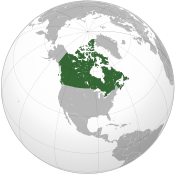Toxic chemicals found in four Canadian politicians
Thursday, January 4, 2007
Toxic chemicals were found in four Canadian politicians after they volunteered to have their blood tested as part of Environmental Defense's report titled Toxic Nation on Parliament Hill.
The federal politicians that were tested are:
- Environment Minister Rona Ambrose,
- Health Minister Tony Clement,
- NDP Leader Jack Layton, and
- Liberal Environment Critic John Godfrey.
Godfrey at number 55 had the highest total number of pollutants followed by Health Minister Tony Clement and Jack Layton at 54 and Environment Minister Rona Ambrose at 49.
They were tested for a total of 103 chemicals, which are related to cancer, developmental problems, respiratory illnesses, and nervous system damage. The chemicals found in them were mainly from household items which can cause cancer. In total, 54 carcinogens, 37 hormone disruptors, 16 respiratory toxins, 54 reproductive or developmental toxins, and 33 neurotoxins were found within the four politicians.
According to Dr. Rick Smith, Environmental Defence's executive director, the politicians are more contaminated than the ordinary citizens tested last year.
"Our tests show that pollution affects everyone. From Parliament Hill to kids in Vancouver and Saint John, harmful pollutants are contaminating the bodies of Canadians no matter where they live, how old they are or where they work, play or go to school," said Dr. Rick Smith. "I don't know why that is. Maybe it has to do with their strange lifestyle — eating out a lot and a high-stress existence," he said.
"Maybe its attributable to the unique lifestyles these guys lead," Mr. Smith said. "Politicians have a very strange, very stressful lifestyle that results in them grabbing a bite to eat when they can and eating a lot of junk food."
All four politicians were more polluted than child and adult volunteers that participated in a survey released last June for pollutants in families.
Pollutants
editThe blood was tested in Quebec and British Columbia for pollutants that fall under seven broad groups which are the following:
- PCBs (polychlorinated biphenyls),
- Stain repellents and non-stick chemicals (known as PFCs, or perfluorinated chemicals),
- Organochlorine pesticides (such as DDT),
- Organophosphate insecticide metabolites (such as the breakdown products of malathion),
- Heavy metals (such as mercury and lead),
- Air pollutants called PAHs (polycyclic aromatic hydrocarbons),
- Flame retardants (PBDEs, or polybrominated diphenyl ethers).
Quotes
editSources
editPress Release: "Pollutants Contaminate Blood of Federal Politicians" — Canadian News Wire, January 3, 2006
- "Federal politicians contaminated with chemicals, group says" — CBC, January 3, 2006
- Martin Mittelstaedt. "Canada's politicians carry chemical cocktail" — Globe and Mail, January 3, 2006
- Dennis Bueckert. "Politicians found to carry toxic chemical soup" — Canadian Online Explorer, January 3, 2006
- "Politicians found to carry toxic chemical soup" — CTV, January 3, 2006
External links
edit

